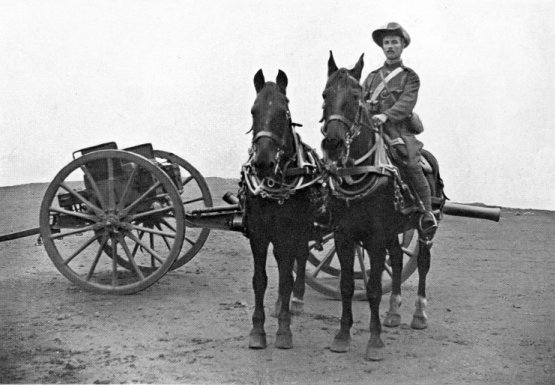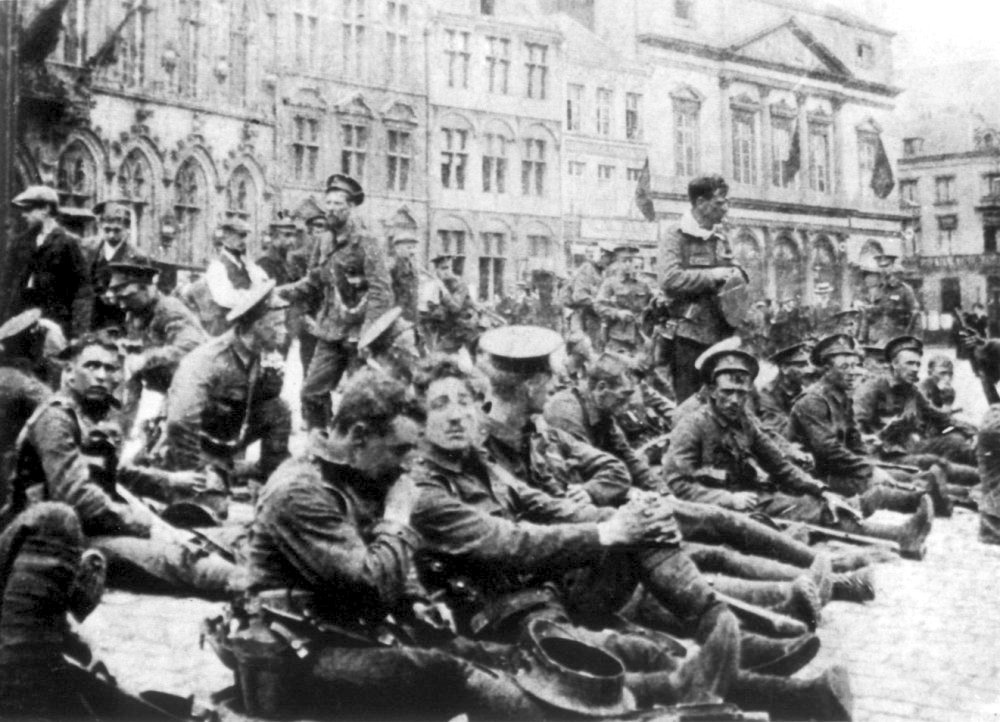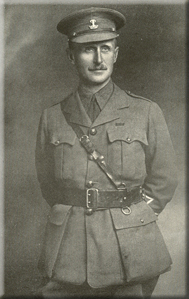|
22nd Mounted Brigade
The North Midland Mounted Brigade (later numbered as the 22nd Mounted Brigade) was a yeomanry brigade of the British Army, formed as part of the Territorial Force in 1908. It served in the Sinai and Palestine Campaign in the First World War. In April 1918, it was merged with elements of the 2nd (Sialkot) Cavalry Brigade to form 12th Cavalry Brigade. It remained in Palestine after the end of the war on occupation duties. Formation Under the terms of the Territorial and Reserve Forces Act 1907 (7 Edw.7, c.9), the brigade was formed in 1908 as part of the Territorial Force. It consisted of three yeomanry regiments, a horse artillery battery and ammunition column, a transport and supply column and a field ambulance. As the name suggests, the units were drawn from the northern part of the English Midlands, predominantly Leicestershire, Lincolnshire and Staffordshire. First World War North Midland Mounted Brigade The brigade was embodied on 4 August 1914, and assigned to Third A ... [...More Info...] [...Related Items...] OR: [Wikipedia] [Google] [Baidu] |
Infantry
Infantry, or infantryman are a type of soldier who specialize in ground combat, typically fighting dismounted. Historically the term was used to describe foot soldiers, i.e. those who march and fight on foot. In modern usage, the term broadly encompasses a wide variety of subspecialties, including light infantry, irregular infantry, heavy infantry, mountain infantry, motorized infantry, mechanized infantry, Airborne forces, airborne infantry, Air assault, air assault infantry, and Marines, naval infantry. Other subtypes of infantry, such as line infantry and mounted infantry, were once commonplace but fell out of favor in the 1800s with the invention of more accurate and powerful weapons. Etymology and terminology In English, use of the term ''infantry'' began about the 1570s, describing soldiers who march and fight on foot. The word derives from Middle French , from older Italian (also Spanish) ''infanteria'' (foot soldiers too inexperienced for cavalry), from Latin '' ... [...More Info...] [...Related Items...] OR: [Wikipedia] [Google] [Baidu] |
Territorial And Reserve Forces Act 1907
The Territorial and Reserve Forces Act 1907 ( 7 Edw. 7. c. 9) was an act of the Parliament of the United Kingdom that reformed the auxiliary forces of the British Army by transferring existing Volunteer and Yeomanry units into a new Territorial Force (TF); and disbanding the Militia to form a new Special Reserve of the Regular Army. This reorganisation formed a major part of the Haldane Reforms, named after the creator of the act, Richard Haldane. The lessons learned during the South African War of 1899-1902 had reinforced the idea that the Regular Army was not capable of fighting a prolonged full-scale war without significant assistance; almost all regular units in the United Kingdom had been deployed overseas within four months of the outbreak of hostilities. Furthermore, by the end of the first year of fighting, the Regular Reserve and the Militia Reserve had been entirely exhausted. (Regular reservists were members of the Regular Army who had retired from the active-d ... [...More Info...] [...Related Items...] OR: [Wikipedia] [Google] [Baidu] |
7th Cavalry Brigade (United Kingdom)
The 7th Cavalry Brigade was a cavalry brigade of the British Army. It served in the Napoleonic Wars, notably at the Battle of Waterloo. It was reformed in 1914 and served on the Western Front as part of the 3rd Cavalry Division until the end of World War I. Napoleonic Wars From June 1809, Wellington organized his cavalry into one, later two, cavalry divisions (1st and 2nd) for the Peninsular War. These performed a purely administrative, rather than tactical, role; the normal tactical headquarters were provided by brigades commanding two, later usually three, regiments. The cavalry brigades were named for the commanding officer, rather than numbered. For the Hundred Days Campaign, he numbered his British cavalry brigades in a single sequence, 1st to 7th. The 7th Cavalry Brigade consisted of: * 13th Regiment of Light Dragoons * 3rd Hussars, King's German Legion It was commanded by Colonel Sir Friedrich von Arentschildt. The brigade took part in the Battle of Waterloo, thou ... [...More Info...] [...Related Items...] OR: [Wikipedia] [Google] [Baidu] |
British Expeditionary Force (World War I)
The British Expeditionary Force (BEF) was the formation of British army on the Western Front during World War I. They were sent by Britain to France in 1914 to aid in resisting the German invasion. Originally sent as six divisions the British Army to the Western Front during the First World War. Planning for a British Expeditionary Force began with the 1906–1912 Haldane Reforms of the British Army carried out by the Secretary of State for War Richard Haldane following the Second Boer War (1899–1902). The term ''British Expeditionary Force'' is often used to refer only to the forces present in France prior to the end of the First Battle of Ypres on 22 November 1914. By the end of 1914—after the battles of Mons, Le Cateau, the Aisne and Ypres—the existent BEF had been almost exhausted, although it helped stop the German advance.An alternative endpoint of the BEF was 26 December 1914, when it was divided into the First and Second Armies (a Third, Fourth and ... [...More Info...] [...Related Items...] OR: [Wikipedia] [Google] [Baidu] |
Leicestershire Yeomanry
The Leicestershire Yeomanry (Prince Albert's Own) was a yeomanry regiment of the British Army, first raised in 1794 and again in 1803, which provided cavalry and mounted infantry in the Second Boer War and the First World War and provided two field artillery regiments of the Royal Artillery in the Second World War, before being amalgamated with the Derbyshire Yeomanry to form the Leicestershire and Derbyshire (Prince Albert's Own) Yeomanry in 1957. The regiment's lineage is currently perpetuated by E (Leicestershire and Derbyshire Yeomanry) Squadron of the Royal Yeomanry. History Original formation and early history During the crisis of 1794, when there were grave fears of a French invasion, the government pressed for the formation of volunteer corps across the country, and in April 1794, letters were circulated to the Lords Lieutenant of each county instructing them to raise regiments of yeomanry. In Leicestershire, a meeting was held at the Three Crowns Inn in Leicester on 1 ... [...More Info...] [...Related Items...] OR: [Wikipedia] [Google] [Baidu] |
Nottinghamshire And Derbyshire Mounted Brigade
Nottinghamshire (; abbreviated ''Notts.'') is a ceremonial county in the East Midlands of England. The county is bordered by South Yorkshire to the north-west, Lincolnshire to the east, Leicestershire to the south, and Derbyshire to the west. The largest settlement is the city of Nottingham (323,632), which is also the county town. The county has an area of and a population of 1,154,195. The latter is concentrated in the Nottingham built-up area in the south-west, which extends into Derbyshire and has a population of 729,997. The north-east of the county is more rural, and contains the towns of Worksop (44,733) and Newark-on-Trent (27,700). For local government purposes Nottinghamshire comprises a non-metropolitan county, with seven districts, and the Nottingham unitary authority area. The East Midlands Combined County Authority includes Nottinghamshire County Council and Nottingham City Council. The geography of Nottinghamshire is largely defined by the River Trent, which for ... [...More Info...] [...Related Items...] OR: [Wikipedia] [Google] [Baidu] |
Norfolk
Norfolk ( ) is a Ceremonial counties of England, ceremonial county in England, located in East Anglia and officially part of the East of England region. It borders Lincolnshire and The Wash to the north-west, the North Sea to the north and east, Cambridgeshire to the west, and Suffolk to the south. The largest settlement is the city of Norwich. The county has an area of and a population of 859,400. It is largely rural with few large towns: after Norwich (147,895), the largest settlements are King's Lynn (42,800) in the north-west, Great Yarmouth (38,693) in the east, and Thetford (24,340) in the south. For local government purposes Norfolk is a non-metropolitan county with seven districts. The centre of Norfolk is gently undulating lowland. To the east are the Broads, a network of rivers and lakes which extend into Suffolk and which are protected by the Broads Authority, which give them a similar status to a National parks of England and Wales, national park. To the west the ... [...More Info...] [...Related Items...] OR: [Wikipedia] [Google] [Baidu] |
Staffordshire
Staffordshire (; postal abbreviation ''Staffs''.) is a Ceremonial counties of England, ceremonial county in the West Midlands (region), West Midlands of England. It borders Cheshire to the north-west, Derbyshire and Leicestershire to the east, Warwickshire to the south-east, the West Midlands (county), West Midlands county and Worcestershire to the south, and Shropshire to the west. The largest settlement is the city of Stoke-on-Trent. The county has an area of and a population of 1,131,052. Stoke-on-Trent is located in the north and is immediately adjacent to the town of Newcastle-under-Lyme. Stafford is in the centre of the county, Burton upon Trent in the east, and the city of Lichfield and Tamworth, Staffordshire, Tamworth in the south-east. For local government purposes Staffordshire comprises a non-metropolitan county, with nine districts, and the Unitary authorities of England, unitary authority area of Stoke-on-Trent. The county Historic counties of England, historical ... [...More Info...] [...Related Items...] OR: [Wikipedia] [Google] [Baidu] |
Lincolnshire
Lincolnshire (), abbreviated ''Lincs'', is a Ceremonial counties of England, ceremonial county in the East Midlands and Yorkshire and the Humber regions of England. It is bordered by the East Riding of Yorkshire across the Humber estuary to the north, the North Sea to the east, Norfolk, Cambridgeshire, Northamptonshire and Rutland to the south, and Leicestershire, Nottinghamshire and South Yorkshire to the west. The county is predominantly rural, with an area of and a population of 1,095,010. After Lincoln (104,565), the largest towns are Grimsby (85,911) and Scunthorpe (81,286). For Local government in England, local government purposes Lincolnshire comprises a non-metropolitan county with seven districts, and the unitary authority areas of North Lincolnshire and North East Lincolnshire. The last two areas are part of the Yorkshire and the Humber region, and the rest of the county is in the East Midlands. The non-metropolitan county council and two unitary councils collabora ... [...More Info...] [...Related Items...] OR: [Wikipedia] [Google] [Baidu] |
Leicestershire
Leicestershire ( ) is a Ceremonial counties of England, ceremonial county in the East Midlands of England. It is bordered by Derbyshire, Nottinghamshire and Lincolnshire to the north, Rutland to the east, Northamptonshire to the south-east, Warwickshire to the south-west, and Staffordshire to the west. The city of Leicester is the largest settlement and the county town. The county has an area of and a population of one million according to 2022 estimates. Leicester is in the centre of the county and is by far the largest settlement, with a Leicester urban area, built-up area population of approximately half a million. The remainder of the county is largely rural, and the next-largest settlements are Loughborough in the north, Hinckley in the south-west, and Wigston south-east of Leicester. For Local government in England, local government purposes Leicestershire comprises a non-metropolitan county, with seven districts, and the Unitary authorities of England, unitary authority a ... [...More Info...] [...Related Items...] OR: [Wikipedia] [Google] [Baidu] |
The Midlands, England
The Midlands is the central region of England, to the south of Northern England, to the north of southern England, to the east of Wales, and to the west of the North Sea. The Midlands comprises the ceremonial counties of Derbyshire, Herefordshire, Leicestershire, Lincolnshire, Northamptonshire, Nottinghamshire, Rutland, Shropshire, Staffordshire, Warwickshire, West Midlands (county), West Midlands and Worcestershire. For statistical purposes, the Midlands is divided into two Regions of England, statistical regions: the West Midlands (region), West Midlands and East Midlands. These had a combined population of 10.9 million at the 2021 United Kingdom census, 2021 census, and an area of . The northern part of Lincolnshire is part of the Yorkshire and the Humber statistical region, and not part of the Midlands. The modern borders of the Midlands also correspond broadly to the early-medieval kingdom of Mercia. The region became important in the Industrial Revolution of the 18th and 1 ... [...More Info...] [...Related Items...] OR: [Wikipedia] [Google] [Baidu] |





